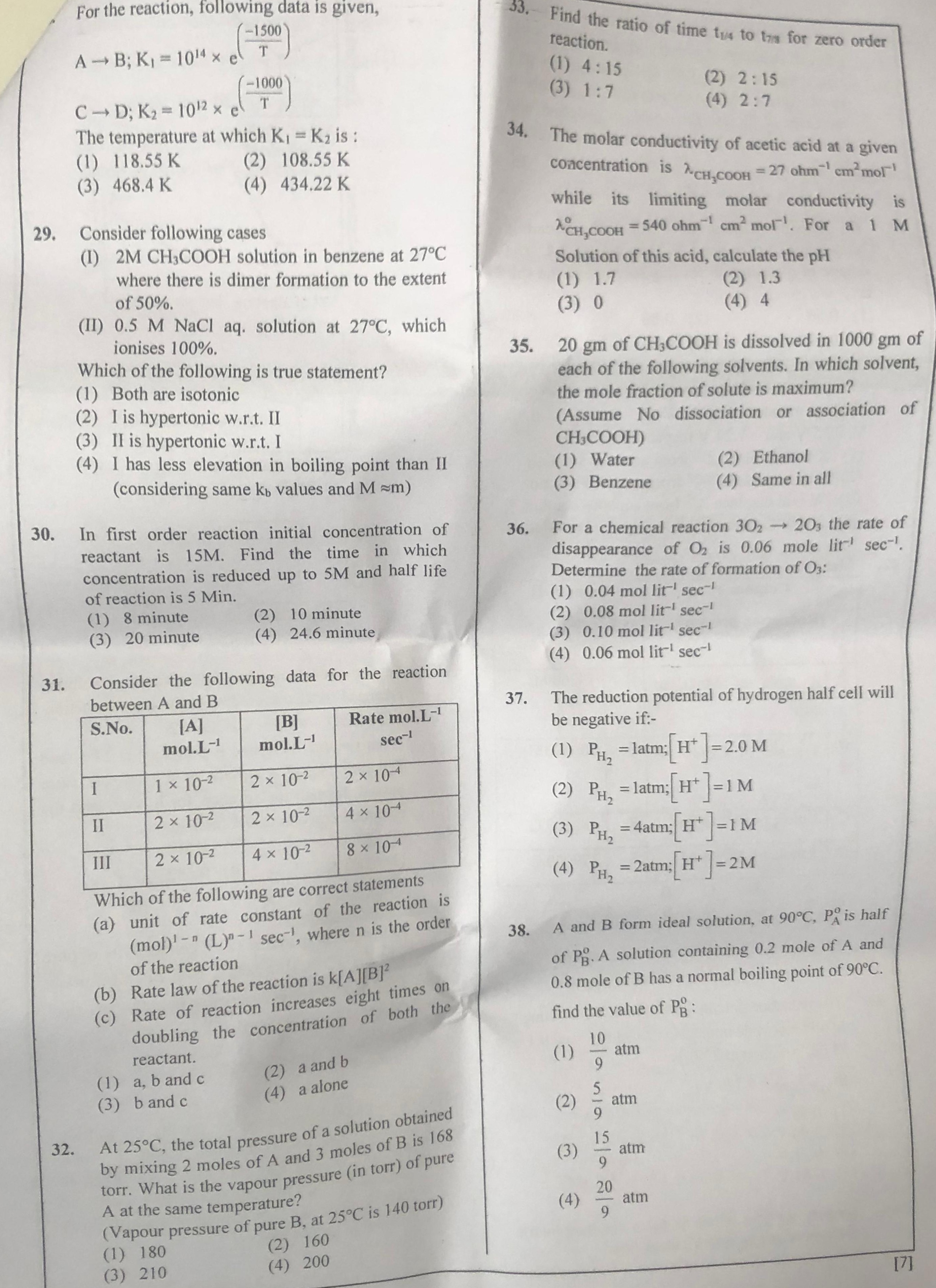Question
Question: For the reaction, following data is given, A → B; $K₁ = 10¹⁴ × e^(⁻¹⁵⁰⁰/T)$ C → D; $K₂ = 10¹² × e^(⁻...
For the reaction, following data is given, A → B; K1=1014×e−1500/T) C → D; K2=1012×e−1000/T) The temperature at which K1=K2 is:

A
118.55 K
B
108.55 K
C
468.4 K
D
434.22 K
Answer
108.55 K
Explanation
Solution
We are given the rate constants for two reactions as: K1=1014×e−1500/T K2=1012×e−1000/T
We need to find the temperature T at which K1=K2. Set the two expressions for K equal to each other: 1014×e−1500/T=1012×e−1000/T
Divide both sides by 1012: 102×e−1500/T=e−1000/T
Take the natural logarithm of both sides: ln(102)+ln(e−1500/T)=ln(e−1000/T) 2ln(10)−T1500=−T1000
Rearrange the terms to solve for T: 2ln(10)=T1500−T1000 2ln(10)=T500
Now, solve for T: T=2ln(10)500
Using the approximate value ln(10)≈2.3026: T=2×2.3026500=4.6052500≈108.57 K
The closest option is 108.55 K.
